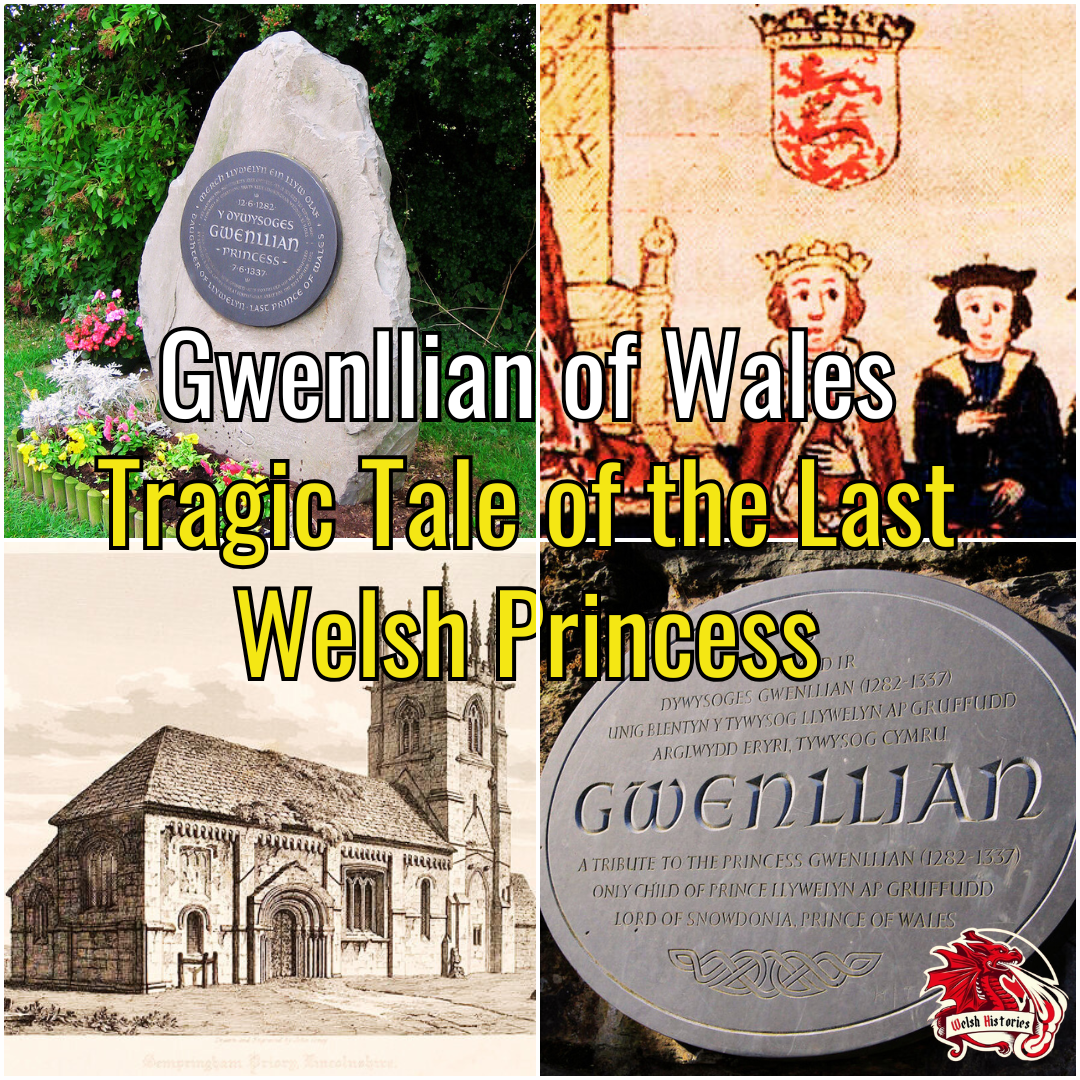Your basket is currently empty!

The Tragic Case of Gwenllian of Wales
It was on this day (7 June 1337) when Gwenllian ferch Llywelyn (not to be confused with the earlier Gwenllian ferch Gruffydd, the “Warrior Princess), the daughter of Llywelyn ap Gruffudd (often remembered as Llywelyn “the Last“, the last native Prince of Wales), passed away in Sempringham Priory, Lincolnshire, at 54 years of age.
Who Was Gwenllian of Wales?
Following the Edwardian Conquest of Wales in 1283, which resulted in the complete takeover of Cymru by Edward I (whom she was related to through her maternal great-grandfather, King John), as well as the grizzly execution of Llywelyn the Last’s brother and successor, Dafydd ap Gruffudd, Edward wished to prevent any further claimants from attempting a rebellion. With Gwenllian being the only child of Llywelyn and Eleanor de Montfort (who died during childbirth), she was instantly seen as a threat to Edward’s ambitions and was abducted at just a few months old.
The Abduction of a Princess
Following her abduction, she was immediately sent to the Gilbertine Priory at Sempringham. The reason for this was simple: she would be unable to marry and have children, cutting off Llywelyn ap Gruffudd’s royal line and ensuring that no strong claimant would emerge. As a nun in the Gilbertine Priory, she was hidden from view and, sadly, largely forgotten about.
With Gwenllian having spent almost the entirety of her life as a nun in England, she was raised with no knowledge of her mother tongue and likely couldn’t even spell or pronounce her own name. It is difficult to determine if she was even aware of who she was; who her parents were and why she was sent to the Priory at such a young age. She died on 7 June 1337, a few days before her 55th birthday, from “old age”.
To this day, she is remembered as one of the most tragic figures in Welsh history and is often stylised as “Gwenllian of Wales”. A stone memorial in her honour, made of Welsh blue slate, can be found in Sempringham. Those of us who have trekked to the peak of Yr Wyddfa might also find a blue plaque honouring her name there, too.
More from Welsh Histories
Welsh Histories is a Welsh history celebrating platform which looks to promote all aspects of Welsh history. Though we focus predominantly on native Welsh history, we do also share the non-native aspects from time to time. You can follow us on Facebook; Instagram or Twitter for more. You can also support us as a member of our Patreon community. A reader? We also have our very own Welsh Histories Shop where we sell our Welsh Histories Magazine. Diolch yn fawr iawn and keep enjoying Welsh Histories.
Niklas is the founder, owner, manager, editor, writer, video creator, voice over artist, and so forth, of Welsh Histories. He is passionate about the preservation of Welsh culture; the rejuvenation of the Welsh language and the promotion of Welsh history. Niklas currently resides in Pune, Maharashtra, with his beloved wife.


Leave a Reply